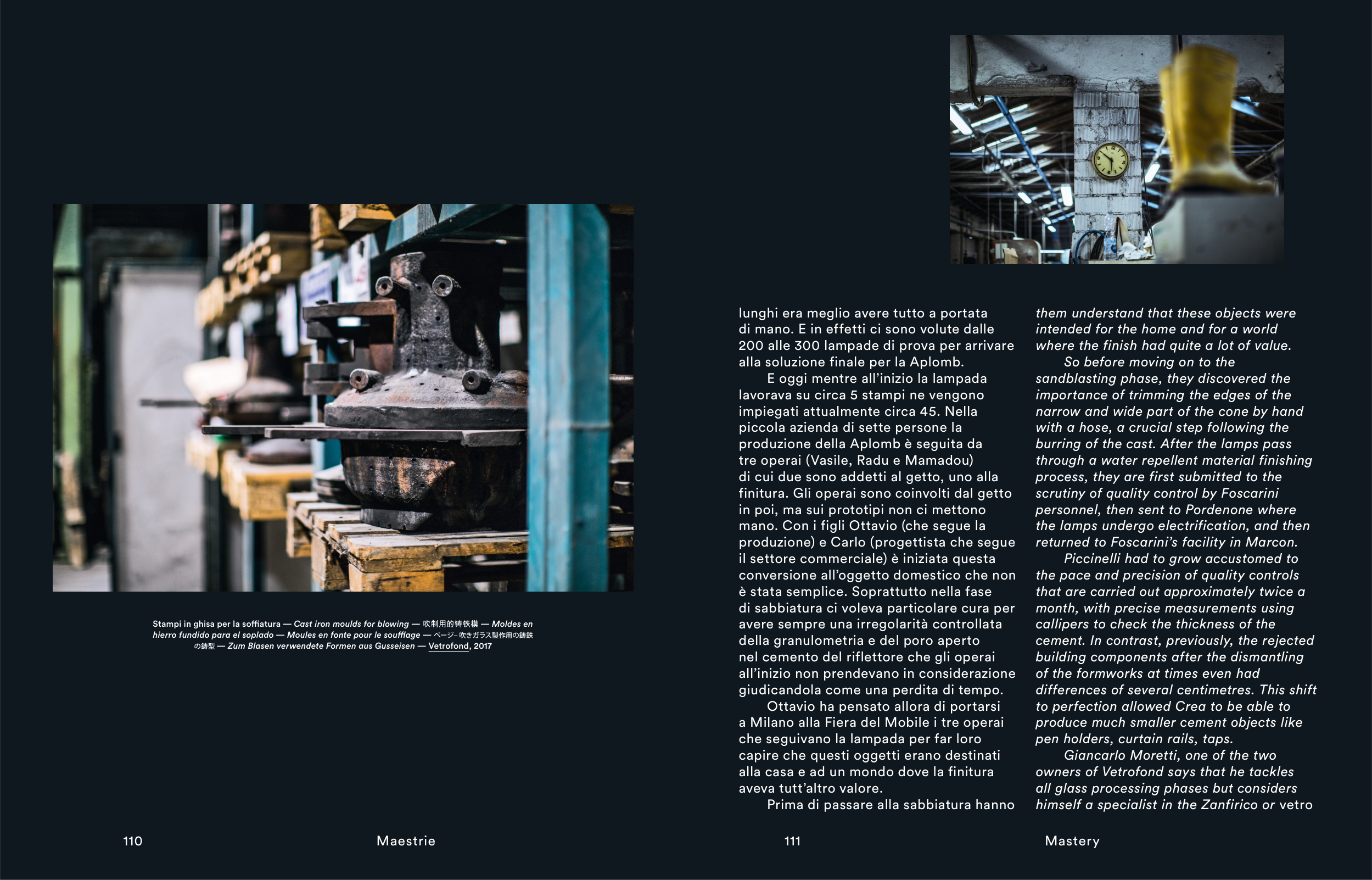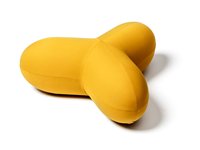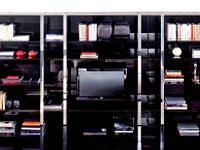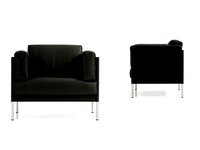lunghi era meglio avere tutto a portata
di mano. E in effetti ci sono volute dalle
200 alle 300 lampade di prova per arrivare
alla soluzione finale per la Aplomb.
E oggi mentre all’inizio la lampada
lavorava su circa 5 stampi ne vengono
impiegati attualmente circa 45. Nella
piccola azienda di sette persone la
produzione della Aplomb è seguita da
tre operai (Vasile, Radu e Mamadou)
di cui due sono addetti al getto, uno alla
finitura. Gli operai sono coinvolti dal getto
in poi, ma sui prototipi non ci mettono
mano. Con i figli Ottavio (che segue la
produzione) e Carlo (progettista che segue
il settore commerciale) è iniziata questa
conversione all’oggetto domestico che non
è stata semplice. Soprattutto nella fase
di sabbiatura ci voleva particolare cura per
avere sempre una irregolarità controllata
della granulometria e del poro aperto
nel cemento del riflettore che gli operai
all’inizio non prendevano in considerazione
giudicandola come una perdita di tempo.
Ottavio ha pensato allora di portarsi
a Milano alla Fiera del Mobile i tre operai
che seguivano la lampada per far loro
capire che questi oggetti erano destinati
alla casa e ad un mondo dove la finitura
aveva tutt’altro valore.
Prima di passare alla sabbiatura hanno
them understand that these objects were
intended for the home and for a world
where the finish had quite a lot of value.
So before moving on to the
sandblasting phase, they discovered the
importance of trimming the edges of the
narrow and wide part of the cone by hand
with a hose, a crucial step following the
burring of the cast. After the lamps pass
through a water repellent material finishing
process, they are first submitted to the
scrutiny of quality control by Foscarini
personnel, then sent to Pordenone where
the lamps undergo electrification, and then
returned to Foscarini’s facility in Marcon.
Piccinelli had to grow accustomed to
the pace and precision of quality controls
that are carried out approximately twice a
month, with precise measurements using
callipers to check the thickness of the
cement. In contrast, previously, the rejected
building components after the dismantling
of the formworks at times even had
differences of several centimetres. This shift
to perfection allowed Crea to be able to
produce much smaller cement objects like
pen holders, curtain rails, taps.
Giancarlo Moretti, one of the two
owners of Vetrofond says that he tackles
all glass processing phases but considers
himself a specialist in the Zanfirico or vetro
111
Mastery
110
Maestrie
Stampi in ghisa per la soffi atura — Cast iron moulds for blowing — ������� — Moldes en
hierro fundido para el soplado — Moules en fonte pour le souffl age — ページ‒ 吹きガラス製作用の鋳鉄
の鋳型 — Zum Blasen verwendete Formen aus Gusseisen — Vetrofond, 2017





